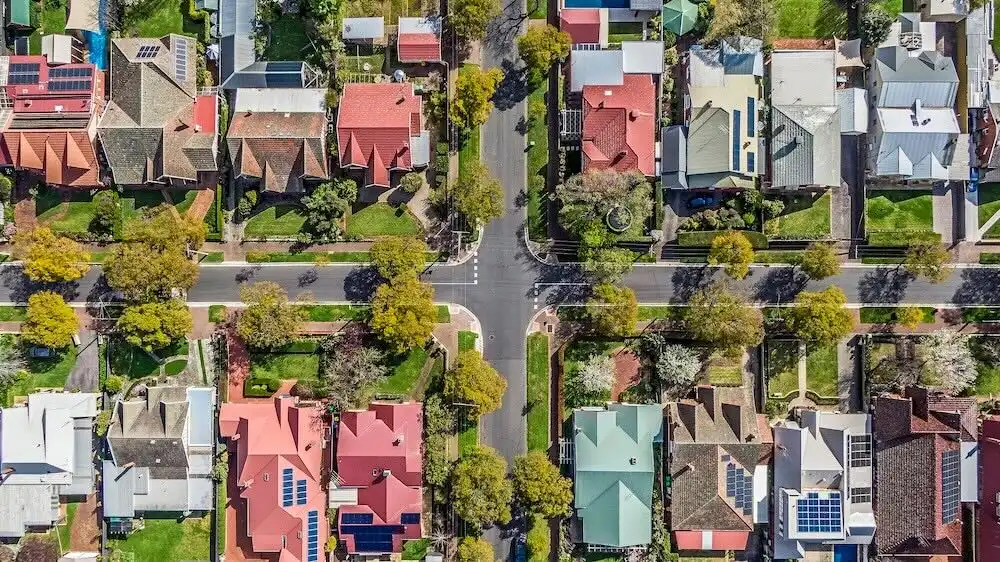Property rebound accelerates as boom-like price growth returns
This week, Westpac declared that "Australia's housing market correction is now over"1 in the face of surging property prices across the country.
May brought the strongest national growth since November 2021 according to CoreLogic's latest report2 as buyer demand continued to swell while listings fell further.
Even as further interest rate hikes remain a possibility, it looks as though the property market is firmly into a new chapter.

Get a free property value estimate
Find out how much your property is worth in today’s market.
National property prices: May 2023
The median Australian home shot up in value by +1.2 per cent in May, recalling the kinds of monthly growth seen in the 2021 boom.
Sydney remained the pack leader with a staggering +1.8 per cent uplift, while Brisbane saw a major acceleration with growth of +1.4 per cent.
Melbourne and Adelaide also came within a fraction of +1.0 per cent monthly gains and Perth continued its streak with a +1.3 per cent boost.
Even Hobart, which has been in a prolonged downswing, returned to positive growth of +0.5 per cent. Darwin and Canberra both posted solid increases of +0.4 per cent.
Regional markets posted softer results but still remained in the green with a combined +0.5 per cent uptick over May.
CoreLogic's Research Director Tim Lawless noted that "buyers are becoming more competitive and there’s an element of FOMO creeping into the market."
"Amid increased competition, auction clearance rates have trended higher, holding at 70 per cent or above over the past three weeks. For private treaty sales, homes are selling faster and with less vendor discounting.”
Buyer demand continues to outstrip ever-dwindling listings
The severe shortage of available stock on the market remained key to accelerating price growth in May as buyers scrambled to find a property to purchase.
Total listings are now nearly -25 per cent below the five-year average, drawing strong competition for sellers across the country.

On average there have been 35,143 new listings coming to market nationally. In that same time, there have been an average of 39,760 sales.
"This disconnect between available supply and housing demand is a central factor placing renewed upwards pressure on housing values," Mr Lawless explained.
The last time capital city stock levels were this low, at this time of the year, was in 2007. This was also a period of rapid overseas migration and rising housing values."
With Spring just three months away, Mr Lawless questioned whether more sellers would begin testing the market in winter to beat the seasonal rush.
If the spring selling season brings an influx of stock, that could serve to put a dampener on the growth we've seen so far in 2023.
The rental crisis is driving more tenants to become buyers
Australia's exceptionally tight rental markets have become another key factor in driving buyer demand up and stimulating price growth.
Rental vacancy rates remain at historic lows while asking rents are soaring, putting more pressure on tenants to break into the purchasing market.

Mr Lawless explained that "while rental demand remains high, we aren’t seeing much sign of a supply response. Capital city rental listings were -36.4 per cent below the previous five-year average at the end of May."
SQM Research Managing Director Louis Christopher posited that "an increasing number of tenants have been turning themselves into First Home Buyers," adding upward pressure on property prices.
There are also signs that investors are beginning to see opportunities in the rental sphere. ABS data4 showed investor loans jumped from a monthly low of 11,500 in January to 15,300 in March.
CoreLogic's report noted that units in larger capital cities are "where rents are rising at a blistering speed." This may be an area of focus for investors in the near future.
What's next for Australian property?
A clear upward trend has emerged in 2023 as strong growth has returned in spite of the past 12 months of interest rate hikes.
Listings have shown no signs of increasing while buyer demand keeps ramping up. There may still be further rate increases though as high inflation persists.
Even so, Mr Lawless said "while higher interest rates might quell some of the demand side pressures as borrowing capacity and sentiment reduce further, demand from record levels of net overseas migration will remain."
The bigger risk lies with mortgage stress and the possibility of distressed sales rising. If there is a significant increase in listings, that could slow the pace of growth we're currently seeing.
Mr Lawless remained confident that low unemployment and healthy levels of household savings should safeguard against that outcome.
"It would be naive to think mortgage arrears won’t rise through the second half of the year, however a material lift in motivated sellers seems unlikely," he said.
The quieter winter season has started yet buyers are still out in force. Come the spring selling season the balance between supply and demand could shift, but for now sellers are in the driver's seat.
1. Westpac IQ, 'Westpac Housing Pulse May 2023', 31 May 2023
https://www.westpaciq.com.au/economics/2023/05/westpac-housing-pulse-may-2023
2. CoreLogic News, 'CoreLogic Home Value Index surges with strongest monthly growth since November 2021', 1 June 2023
https://www.corelogic.com.au/news-research/news/2023/corelogic-home-value-index-surges-with-strongest-monthly-growth-since-november-2021
3. SQM Research Weekly Newsletter, 'Rental Vacancy Rates Rise to 1.2%', 16 May 2023
https://mailchi.mp/sqmresearch/rental-vacancy-rates-rise-to-12
3. Australian Bureau of Statistics, 'Lending indicators', 5 May 2023
https://www.abs.gov.au/statistics/economy/finance/lending-indicators/latest-release







